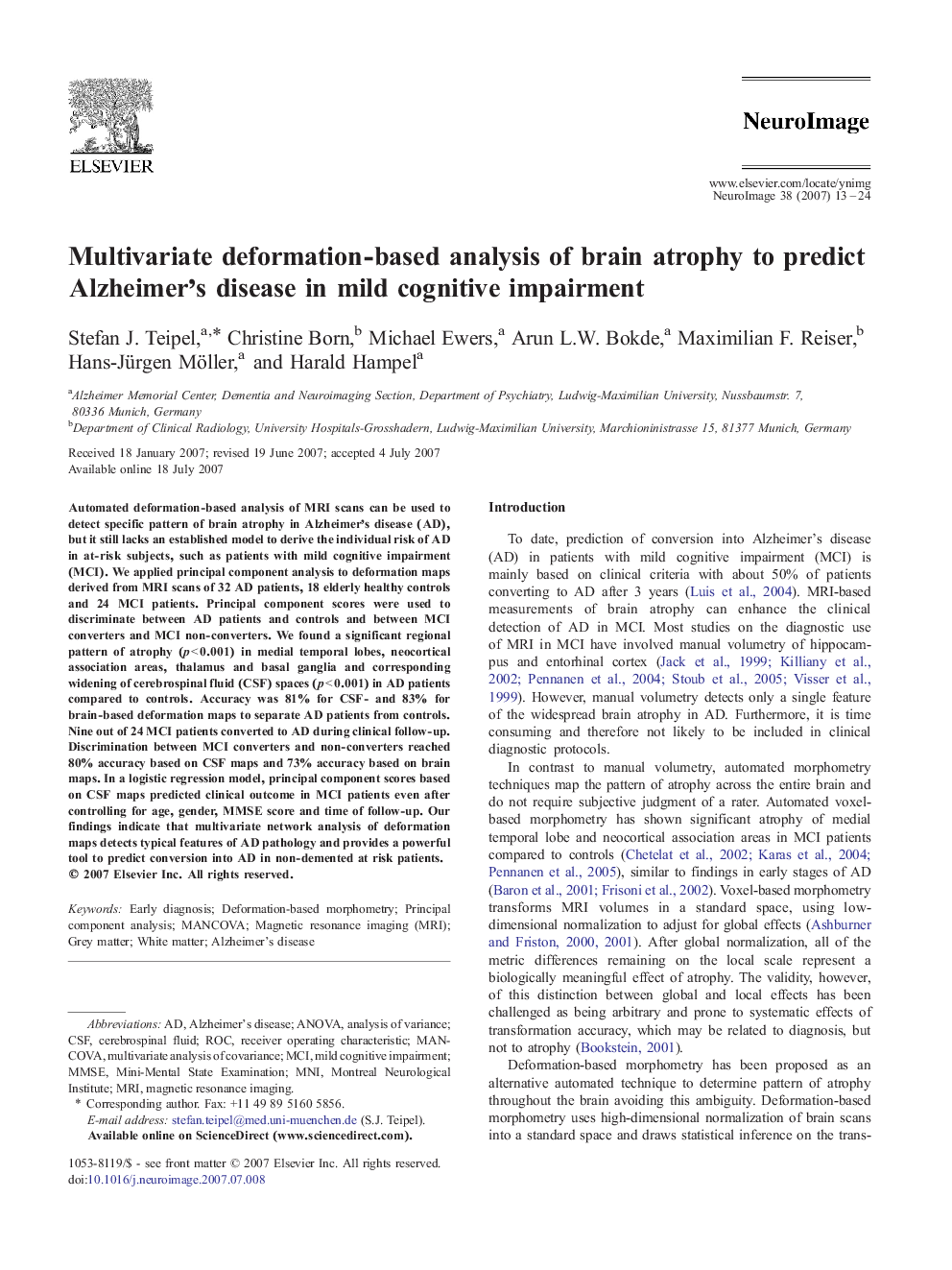| Article ID | Journal | Published Year | Pages | File Type |
|---|---|---|---|---|
| 6040099 | NeuroImage | 2007 | 12 Pages |
Automated deformation-based analysis of MRI scans can be used to detect specific pattern of brain atrophy in Alzheimer's disease (AD), but it still lacks an established model to derive the individual risk of AD in at-risk subjects, such as patients with mild cognitive impairment (MCI). We applied principal component analysis to deformation maps derived from MRI scans of 32 AD patients, 18 elderly healthy controls and 24 MCI patients. Principal component scores were used to discriminate between AD patients and controls and between MCI converters and MCI non-converters. We found a significant regional pattern of atrophy (p < 0.001) in medial temporal lobes, neocortical association areas, thalamus and basal ganglia and corresponding widening of cerebrospinal fluid (CSF) spaces (p < 0.001) in AD patients compared to controls. Accuracy was 81% for CSF- and 83% for brain-based deformation maps to separate AD patients from controls. Nine out of 24 MCI patients converted to AD during clinical follow-up. Discrimination between MCI converters and non-converters reached 80% accuracy based on CSF maps and 73% accuracy based on brain maps. In a logistic regression model, principal component scores based on CSF maps predicted clinical outcome in MCI patients even after controlling for age, gender, MMSE score and time of follow-up. Our findings indicate that multivariate network analysis of deformation maps detects typical features of AD pathology and provides a powerful tool to predict conversion into AD in non-demented at risk patients.
